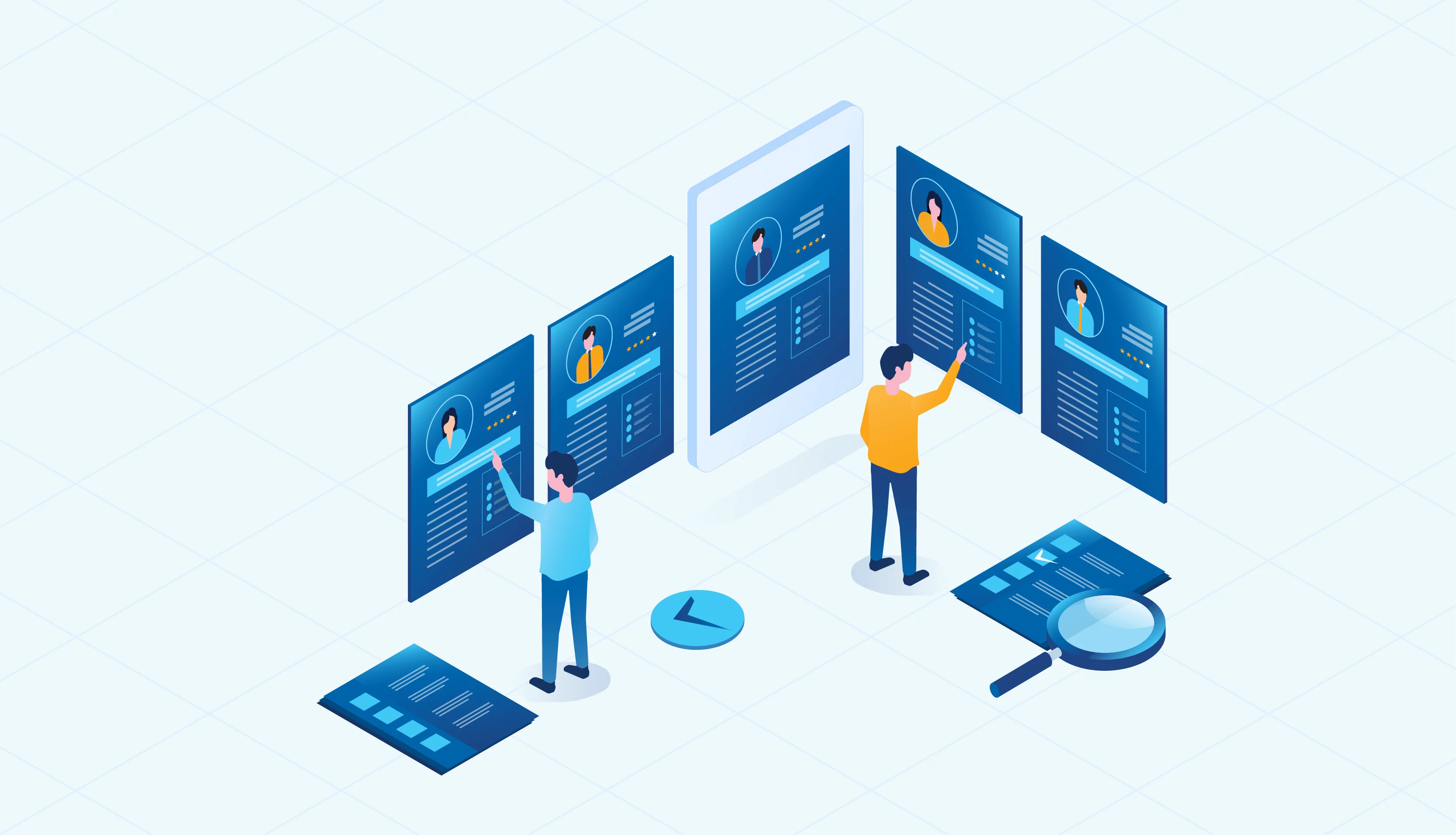HR Information Systems assist companies in using an integrated suite of HR tools to streamline HR-related processes’ complex and multi-faceted nature.
HRIS has gained significant popularity with organizations of all sizes because of its primary method of controlling HR administration requirements.
An HRIS is an excellent solution to automate, streamline and improve HR processes. It gathers, stores, and analyzes the data of employees from different businesses to prevent duplicate data and create one source of truth.
However, with the various options for HRIS and each one seemingly crafted with various features, picking the most appropriate HRIS can take time and effort.
However, only a tiny fraction of HR software features are remotely beneficial. They are mostly marketing techniques. Here’s a list of nine essential core functions companies should look for in possible HRIS software.
Top 8 Core Functionalities in a Human Resource Information System
Centralized storage:
A database with an automatic system that gathers information, stores, and displays current, reliable information on the employees and the policies and procedures within an organization, HR managers can finally get rid of spreadsheets and paper documents.
A central database seamlessly linked to other HR systems can ensure easy access for all users.
Safekeeping, all employee data in a central cloud-based HRIS Software will eliminate redundancy and ensure data integrity.
Any changes or updates that are made to the database master will be reflected instantly across the entire module, which will save an enormous amount of time as well as effort the HR department has to put into matching and duplicating the records manually.
What are the times you require centralized storage?
Businesses of all sizes can enjoy this feature’s benefits, and it’s a must-have for medium and large enterprises. While SMBs can get by without this technology, enterprises could enhance their efficiency and help them get on the path to success.
Management of recruitment:
Finding, hiring, and keeping the best talent efficiently and quickly is the foundation of the success of an organization. The success of recruitment is based on developing long-lasting relationships with current and potential employees.
A perfect candidate tracking program will simplify traditional recruitment processes and streamline talent relationship management.
The automated recruiting process is seamlessly integrated with the built-in report module that allows you to study trends and patterns in the recruitment process. It can seamlessly integrate with job portals, external websites, internal sites, and employment-service providers to ensure hiring is a breeze.
The ideal time to introduce this feature is
Companies seeking ways to cut down their costs for recruitment and speed up their recruitment processes can simplify their recruitment process and make it more aligned with their overall corporate strategy with the appropriate applicant tracking system.
Onboarding of employees:
An easy process for onboarding employees can prepare the new employees for immediate success and will ensure that they get a positive start. Through an automated onboarding process, employers can:
- Eliminate the chaos caused by the paperwork
- Reduce the time it takes for employees to be onboarding
- Eliminate manual interventions and human mistakes
- Provide a consistent experience for new hires
- Facilitate a straightforward process for onboarding
Furthermore, thanks to an automated onboarding process, HR managers do not have to follow up with new hires, and managers have to finish the documentation for onboarding.
The system will issue automatic messages to those who delay the process and ensure that the process continues to run as smoothly as possible.
Who needs an automated process to onboard?
Startups struggling to complete their checklists for onboarding and forms could eliminate the manual component of the onboarding process by implementing automation. Even mid-sized businesses using online forms and workflow tools can streamline their approval process and make it easier, more accessible, and enjoyable.
Management of talent:
Employees are the most valuable assets for any company. But how to manage managing talent, i.e., attracting employees, attracting, engaging, and developing employees, is a complex process. In addition, the cost of employee turnover is high. An HRIS with a unique talent management system can aid the company in taking better care of its employees.
A sound talent management system will assist employees through every stage of their work, from recruitment to training, development, and retention. Most importantly, it allows employers to see a single picture of their employee’s profiles across their entire organization and to align their efforts to manage talent with the overall corporate goals.
What are the best times to look for a module to manage your talent?
Organizations that need help identifying the gaps in talent and predicting performance gaps can benefit from comprehensive software to improve their strategy for managing their talent, improving their decision-making, and preparing to meet future talent needs.
Management of performance:
A performance management system monitors how employees perform regularly and systematically. It helps the business ensure that departments and employees throughout the organization effectively meet the company’s goals. Businesses that are successful benefit by having employees who are more in line with the corporate objectives.
It allows line managers and HR teams to save time in the manual management of performance appraisals and instead concentrate on more beneficial aspects that comprise the procedure, like coaching, assisting, and providing employee training.
A performance management program will not just standardize the review of employee performance but also ensure that the individual and team goals align with the corporate objectives. Employers can create a non-biased appraisal process, connect the performance of employees with compensation and create a performance-based compensation system.
The right person to set up performance management modules:
Small and mid-sized businesses that utilize online forms and documents for their performance management process and companies that utilize independent appraisal systems must choose an HRIS system with a robust performance management system.
Employee Self-Service:
Small and mid-sized businesses often need help to keep employee data up-to-date. Employee Self-Service (ESS) provides an effective method of tackling this issue. The ability for employees to access and control their data (profile or time off information and benefits, as well as payroll) could cut down on time spent by HR employees doing mundane clerical work.
Each HR function can be more efficient through a self-service portal, from onboarding employees to reporting. If the HRIS offers multi-channel access, employees can access or edit the complete information about their work right via their mobile phones. Employees won’t be involved in a chase for their mail to get their leave balance or pay slips.
What is the right time to deploy an employee portal that allows self-service?
Companies that have outgrown the initial size are contemplating expanding their HR department to handle the rising workload. It can count on HRIS software that comes with self-service portals to help reduce the workload of HR and enable workers to control their profiles.
Time and Absence Management:
Controlling employees’ timesheets and schedules and keeping track of the attendance manual takes an enormous amount of HR work. Maintaining a record of leave request emails and tracking the absences of employees while drafting a plan to handle the ever-changing workload is a significant challenge. Additionally, exporting attendance information to payroll is time-consuming and exhausting.
An HRIS can resolve the problems related to time and leave management by providing a broad set of features like:
-
- Auto-capture and then submit timesheet entries
- Workforce scheduling
- Management leave
- Drill-down analytics and drill-throughs
Integrations with accounting, payroll, etc.
If mishandled, Timesheets and vacation requests could cause lots of issues. Incorrectly handled time-off requests can create an impression of discontent with the general quality of life at work and lower employee satisfaction. Thus streamlining the management of timesheets and time-off procedures using an HRIS system can prevent manual mistakes and help prevent catastrophes.
Who needs an integrated time management program?
Companies that depend upon HR administrators to handle the attendance report and to create permissions for time off and leave should buy an HRIS system that includes self-service and time management software.
Management of training:
Software for managing training allows businesses to offer a blended training experience to their employees to boost engagement, satisfaction with work, and retention. It helps businesses identify the gaps in employees’ skills, design the training program, customize it, and then deliver training programs that align with individual training needs.
Companies can also utilize training management software to evaluate, track and analyze employee training programs’ results to ensure they are effective. It improves the performance of employees as well as reduces the performance gap, and encourages collaboration among employees to produce a workforce that is fully engaged and motivated to give their best performance.
Do you require a module for training management?
Mid-market firms seeking ways to ensure that they have a straightforward training experience can benefit from these training modules to increase the performance of employees and improve the ROI for their training programs.
As the driving force behind WikiPluck, I am dedicated to curating and sharing insightful knowledge across a spectrum of subjects. From technology trends to Business advice, WikiPluck strives to be a go-to resource for those seeking to enhance their understanding and make informed decisions.
Join me on this journey of discovery and enlightenment as we pluck the gems of wisdom from the vast landscape of knowledge.

